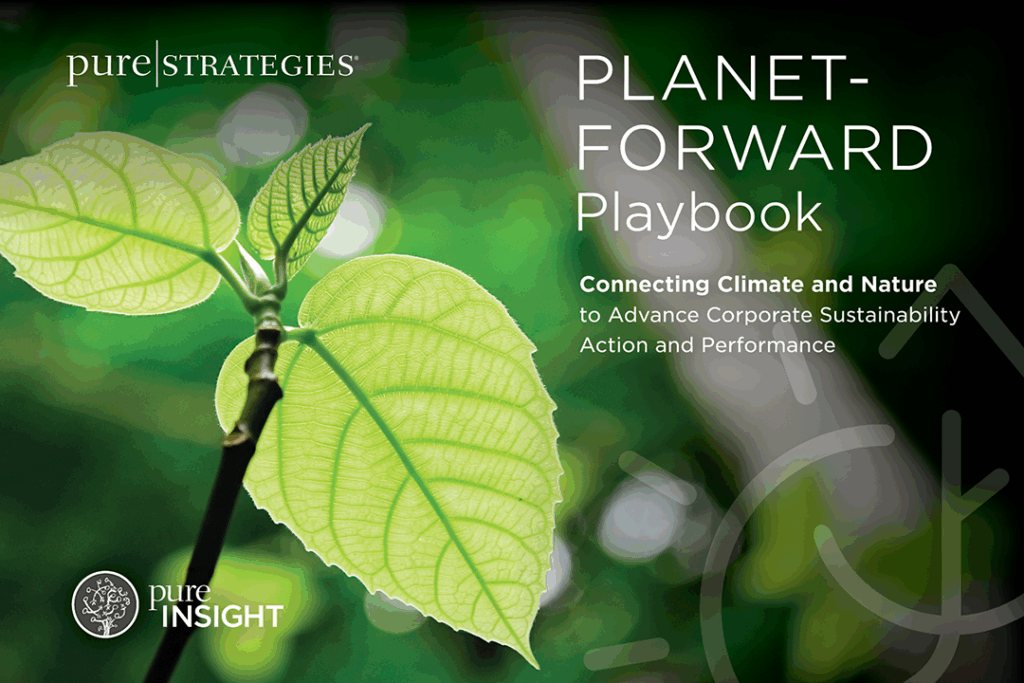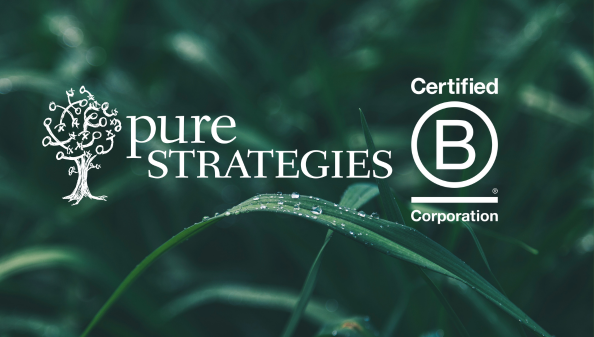Only 5 percent of Fortune Global 500 companies have quantified biodiversity targets. Yet, this lack of intentional efforts by companies threatens business value. Not only are businesses dependent on nature, but there is also a critical interdependence between climate stabilization and effective functioning of the ecosystem.

Climate strategies will be ineffective without halting and reversing nature loss. To operate, all businesses rely on a stable climate and functioning ecosystems in nature. Climate change impacts such as flooding, damaging storms, wildfires, drought and temperature extremes are driving higher costs and causing business interruptions. Further, nature loss is expected to become an even greater source of risk for businesses, especially as climate change exacerbates nature declines.
There is also an upside to preserving nature. Businesses benefit from efforts to mitigate climate change and build nature resilience. Those benefits — deriving from cost savings, risk reduction and growth potential — are estimated at $10 trillion worth of annual business opportunities by 2030.
Despite the clear need for climate and nature action, companies are not doing enough. That’s because they are overwhelmed by adding nature into their climate program and uncertainty about how to progress.
Start now!
Pure Strategies released a playbook this month to help companies overcome common challenges with advancing nature efforts. “Planet-Forward Playbook: Connecting Climate and Nature to Advance Corporate Sustainability Action and Performance” outlines how to complete a simple gap assessment that helps a company identify its strengths, opportunities and next steps for a more effective climate program and to advance nature strategies.
The planet-forward approach leverages the inherent connection between climate change mitigation and nature resilience for a more robust sustainability strategy. The key actions for this approach include protection, restoration and sustainable management of natural resources.
Importantly, this approach aligns with the Paris Agreement and Global Biodiversity Framework, and points to the need for companies to take on the responsibility for supporting both of these global aims.
As a result, in addition to evaluating what a company is doing to protect, restore and sustainably manage nature, a company can benchmark its efforts against the targets in the Global Biodiversity Framework, such as:
- Aim to protect an area equivalent to 30 percent of the business nature footprint, within or beyond the value chain (focusing on priority/nature-critical locations).
- Aim to restore an area equivalent to 30 percent of the business nature footprint, within or beyond the value chain (nature-critical locations).
- Aim to have nature-based sourcing, production and operations sustainably managed to avoid harm to biodiversity. For example, such approaches should avoid overexploitation, deforestation or overgrazing, and instead employ sustainable/regenerative practices.
Nature footprint
The nature footprint is a key performance indicator to help guide planning and progress of nature protection activities. This is a way to evaluate high-level impact and refers to how much land area is used for nature-based raw materials, product production and operational activities (a land footprint). Further, it may be material for a company to also add freshwater and marine surface areas. A nature footprint that only includes a land footprint is a typical starting point for companies that are embarking on a path for nature protection.
- Land footprint: land occupation for nature-based raw materials, product production and operational activities
- Nature footprint: land footprint plus freshwater and marine area for nature-based raw materials, product production and operational activities when material
This concept is also described by the Greenhouse Gas Protocol (GHGP), which discusses the land metric, specifically “land occupation.” The nature footprint indicator is a way to evaluate impact and to quickly compare a company’s progress toward its targets with the global aims. Companies have noted that this is a useful way to evaluate their program efforts: to allow for a simple metric to start the program while providing room for additional, more project- or region-specific metrics as a program evolves.
A path for progress
A key starting point for companies is to internalize the inherent connection between climate and nature. This alone has helped companies unlock progress for nature. For example, instead of talking about climate as a separate thing from nature, educate internal teams about their interdependence. This may mean a shift from treating climate and nature as separate programs in their own silos or adding additional terms to underscore the interdependence.
Use the gap assessment in the Planet-Forward Playbook to get a quick view of how the program is leveraging this climate and nature connection. Consider adding the concept of the nature footprint (high-level impact indicator) to benchmark progress to the Global Biodiversity Framework.
As an example, Everlane has a science-based climate target and has been working to mitigate emissions across its apparel value chain. Everlane relies on many naturally derived materials for its textiles and products, so the company started to look at its climate strategy to explore the connection to nature, beginning with a gap assessment, and plans to dive deeper.
After the gap assessment, companies can begin to plan the next steps. The Planet-Forward Playbook offers several ways to progress. For example, companies are using the planet-forward approach to build high-level aims and overall strategies to support the Taskforce on Nature-related Financial Disclosures (TNFD) or are diving in deeper with Science Based Target Network target-setting protocols.
Toyota Motor North America (TMNA) has a commitment to “live in harmony with nature.” As a result, the company has a biodiversity program that includes actions at its manufacturing sites and beyond its value chain. Notably, the company has a view of its value chain land footprint and has active nature projects with external partners. After completing a gap assessment, the company found that it is already supporting a notable portion of its land footprint in restoration projects and is planning to expand its efforts.
The 2030 global aims for climate and nature are just over five years away. We need to accelerate progress on climate stabilization and nature recovery simultaneously to avoid the worst consequences of these crises to businesses and humanity. It is time to Start Now!


